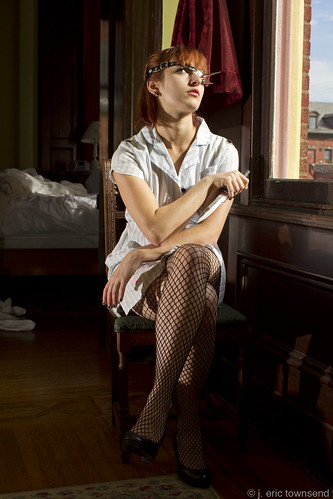Latest Design/Digifab Experiment: From Cupcake to Shapeways
[This is going to get a bit nerdy, but don’t worry, I save the hardcore stuff for my nerd blog.]
I had an idea recently for a different way of making ground plane antennas for the 2M band. Don’t worry about what they actually are, suffice it to say that they occupy a lot of volume and are a pain to transport. Imagine a pyramid made out of four 60cm coathangers with another 60cm coathanger coming out the top of the pyramid and you’ve got a typical ground plane antenna. On the other hand, they’re cheap, easy to build and can be tuned/adjusted with the SWR meter in a decent VHF radio.
(Ok, that’s pretty much all the geek stuff out of the way. See, that wasn’t so bad, was it?)
So here’s the problem. What if you want to toss a ground plane antenna in the back of your car, carry it somewhere on your bicycle, or have it as part of an emergency “go bag”? Are you really going to cart around a delicate bit of metal sculpture that occupies a rectangle a half-meter on each side and a meter tall? No, you aren’t.
This became a problem with an interesting combination of design and fabrication: How I could make it easier to transport and store but still be easy to set up and function correctly as an antenna? The idea of making it fold up seemed like the most obvious solution, but folding means moving parts which means more chance of coming apart. However, most people use this sort of antenna in a fixed location, often inside an attic or outside resting on a flat surface. At worst it might be used outside in windy situation and I’m thinking about a second version for that sort of environment. I started my process with the traditional sketching but instead of making foamcore models I decided to fire up the MakerBot Cupcake I built last winter and start out with ABS prototypes.
Total time spent modeling and printing each iteration was about an hour, and it was easy to fit that in at night after dinner over a few nights. The first few didn’t work very well but I quickly hit one that did work and that was a relatively simple piece of plastic. (Ok, it worked better after a bit of filing and sanding, but it worked.) Within a few minutes I’d bent and cut some welding rod, soldered a stick of it to an adapter, tweaked the resonance a bit, and I had a working antenna for not very much money.
The problem quickly became “How do I share this with other amateur radio operators?” Sure, I posted the STL on Thingiverse, but you have to own or know someone with a 3D printer for that to be of any use.
I think the answer is going to be Shapeways. I’ve ordered printed items from them in the past and while they aren’t cheap, they have wonderful print quality and ship worldwide. I’ve started the process of setting up a store there and in the spirit of Amateur Radio will offer my antenna mount for minimal markup.
In a few months we’ll see how this experiment worked: Can a design concept prototyped on a hobby 3D printer be turned around and sold for a small profit by a commercial fabrication shop? What are the unexpected surprises or hidden gotchas that need to be solved for this to be more than a hobby and instead a viable business model?


